Results
-
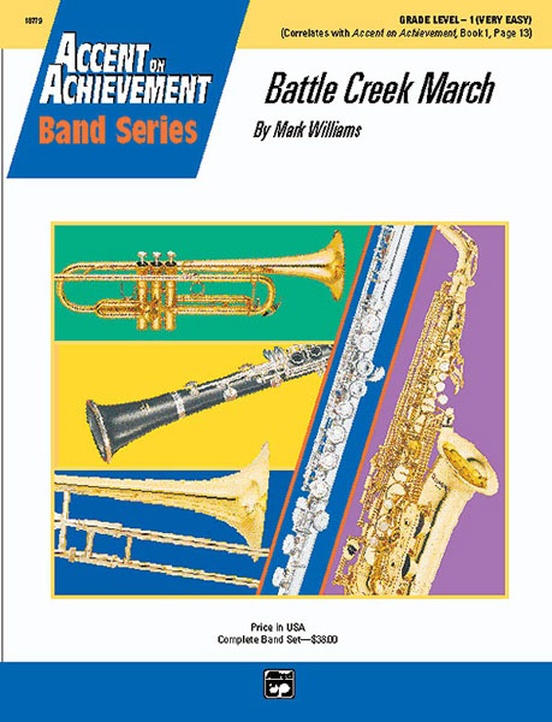 £45.95
£45.95Battle Creek March - Mark Williams
Your beginning band will sound great in its first concert performing this easy 2/4 march by Mark Williams. This piece is a fantastic confidence builder and uses only seven notes. Correlated with , page 13, you'll want to use this one again and again! (2:00)
Estimated dispatch 3-5 working days
-
 £53.95
£53.95Boss Battle - Brian Bankston
Looking for something a little different? Here is a chart geared for younger musicians that will have them looking forward to band. This dark, ominous piece combines a driving tempo and exciting rhythmic patterns for a momentum that delivers a powerful punch. This one will stretch your students' ears and offers many teaching opportunities. Stun your crowd with this suspenseful piece at your next performance.Original Item#: RWS-2256-00
Estimated dispatch 3-5 working days
-
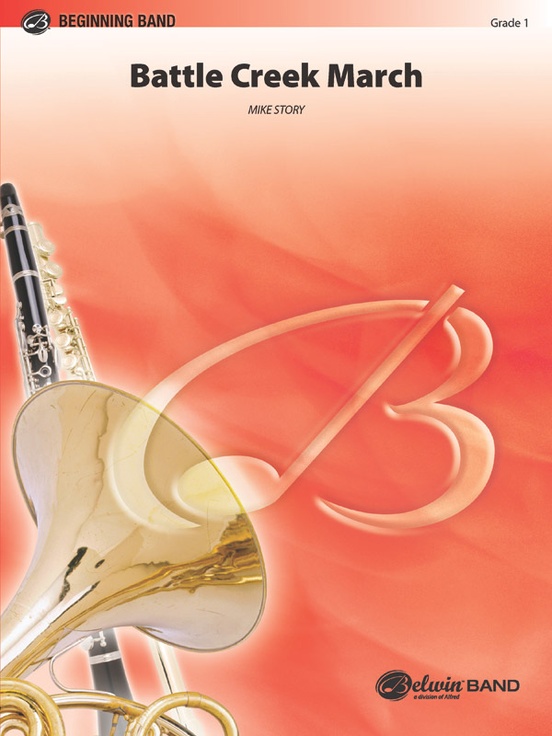 £50.50
£50.50Battle Creek March - Michael Story
After a quiet and subdued opening, layered sonorities build a flow to a forceful, tutti conclusion. There are no surprises and the degree of difficulty is a secure grade 1. This march will serve as a fresh opener for your next concert or contest appearance. (1:45)
Estimated dispatch 3-5 working days
-
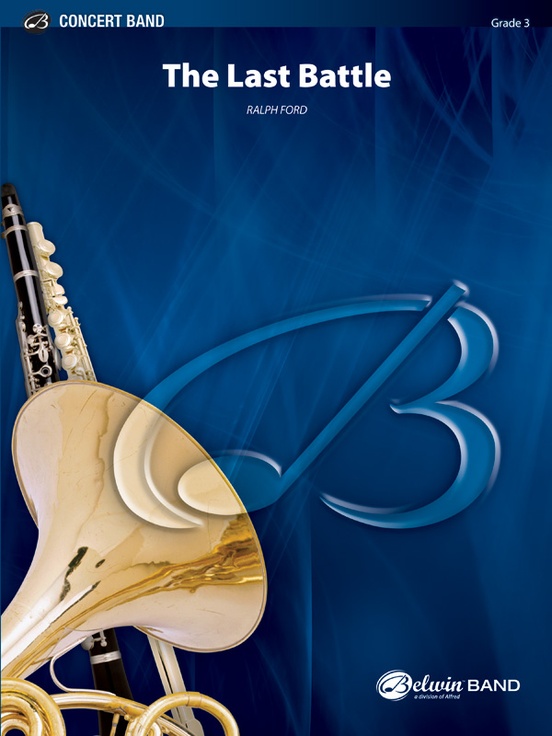 £66.95
£66.95The Last Battle - Ralph Ford
A bit dark and mysterious, but engaging for your students to rehearse. The initial musical indication is "with fury" beginning with a bold fanfare section. Then, splashes of sound and vivid textures are presented throughout. A dynamic addition to your concert or contest program. (3:03)
Estimated dispatch 3-5 working days
-
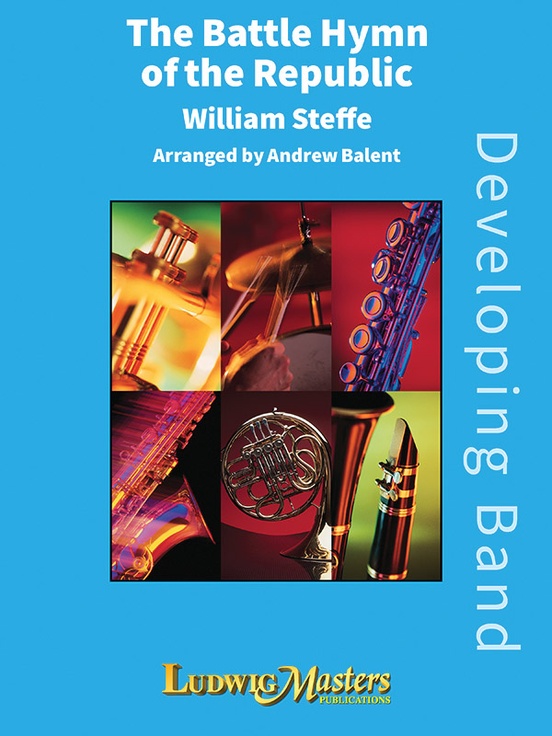 £50.50
£50.50The Battle Hymn of the Republic - William Steffe / arr. Andrew Balent
On the 150th anniversary of the end of the American Civil War there could be no better work to perform than one of our greatest national songs. It is expertly scored and is a superlative vehicle for teaching correct interpretation of the dotted eighth-sixteenth note rhythm. The work is a wonderful closer for a concert.
Estimated dispatch 3-5 working days
-
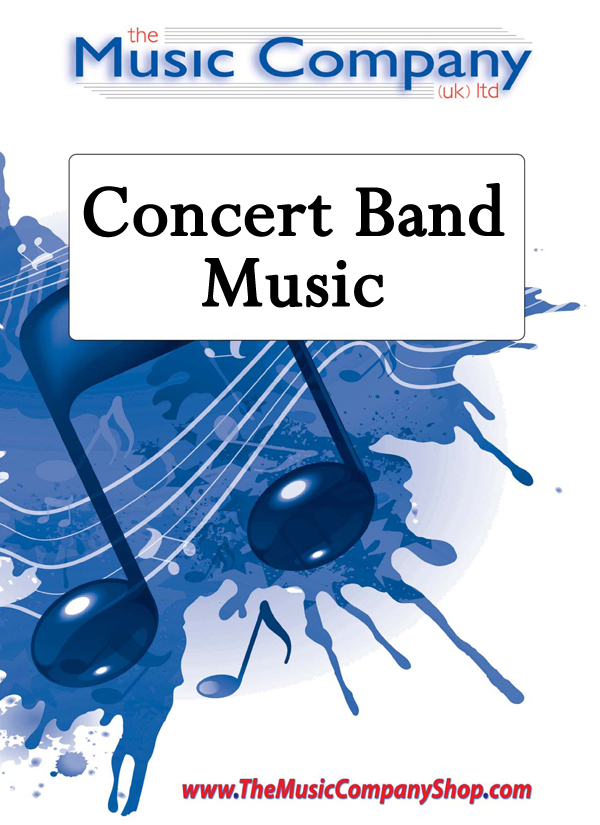 £65.00
£65.00Freyja's Call - Andrew Duncan
According to Viking mythology, following a battle the bravest souls of the slain would be divided between two Gods, Odin and Freyja. Freyja was the Goddess of Love and War and before going into battle many Viking warriors would pray that they would die bravely so that Freyja would take their soul to join her personal army made up of the souls of the bravest of men.'Freyja's Call' describes one of these, a young Scottish soldier, going into battle as part of the Viking army who occupied parts of Scotland for four centuries. First, a slow theme is heard, Freyja's theme, which is the soldier praying to Freyja to keep a watch on him. Then the drums introduce a new rhythm which announces the beginning of the battle.A Celtic Jig is used to describe the progress of the battle with the jig played quietly at first then gradually louder with more percussion being added until a full ff section signifies the soldier fighting the enemy directly.Suddenly, the music drops back to the quiet Jig theme. The soldier has been slain, but will he be chosen by Frejya? After a short time, Freyja's theme is heard as the brave soldier is taken to Freyja's heavenly army of brave warriors, and the piece then ends in triumph.
In stock: Estimated delivery 1-3 days
-
£134.30
Wellingtons Sieg - Ludwig van Beethoven
After the 'Battle of Vitoria', Beethoven's friend Johann Nepomuk Maelzel talked him into writing a composition for his panharmonicon (a kind of 'mechanical orchestra') to commemorating this battle. The piece, 'Wellingtons Sieg' ('Wellington's Victory') was dedicated to the Prince Regent, later King George IV and first performed in Vienna on 8 December 1813 at a concert to benefit Austrian and Bavarian soldiers wounded at the 'Battle of Hanau', with Beethoven conducting. It was an immediate crowd-pleaser and met with much enthusiasm from early concertgoers and the piece proved to be a substantial money-maker for Beethoven. 'Wellingtons Sieg' is something of a musical novelty. Besides the orchestra, on stage there are two 'sides', British and French, both playing the same instruments: Trumpets, Snare Drums, 'Canon' and Ratchet. The work has two parts: the 'Battle' ('Schlacht') and the 'Victory Symphony' (Sieges Sinfonie). The first part is programme music describing two approaching opposing armies and contains extended passages depicting scenes of battle. It uses 'Rule Britannia' for the British side and 'Marlbrough s'en va-t-en guerre' for the French side. The 'Victory Symphony' exhibits some typical Beethoven composing techniques. It can be considered as a sonata form that, stripped of the development section, comes equipped with an extended coda. Dutch arranger Andreas van Zoelen transcribed 'Wellingtons Sieg' for Symphonic Band.
Estimated dispatch 7-14 working days
-
£184.99
Rubicon - Bert Appermont
The Rubicon is a river in Northern Italy which Julius Caesar crossed with his army in 49 BC in defiance of the leaders of Rome, who feared his power. A civil war against rival Pompey ensued, which culminated in Caesar seizing power as the absoluteruler of Rome. The phrase "crossing the Rubicon" therefore refers to any person committing himself irrevocably to a risky, decisive and irrevocable of course of action.The work consists of three parts that deal with this important moment in history.Part 1 (Meditation) symbolises Caesars request to the Gods to assist him in his difficult choice. In a slow introduction we hear the melancholy and beseeching sounds of the duduk (alternatively, this part can be played by a soprano saxophone)and of the soprano solo singer over the bourdon accompaniment. The soprano solo singer then sings "dona tibi pacem" (give him rest) in a melodious and probing theme.In Part 2 (Battle of Pharsalus) trumpets and trombones resound alternately ina stately Roman fanfare, producing a stereophonic effect. This develops into a martial theme in which Caesars impressive army goes to battle against the army of rival Pompey. While the theme of Caesars army fades away, Pompeys theme emerges as anaive dance in six-eight time. His army is definitely in the majority and it believes it can easily defeat the enemy. Suddenly trumpets and trombones clash on two sides of the orchestra: Caesars army advances and attacks. A fierce battle ensues inwhich the two themes are played alternately as well as simultaneously. Thanks to his shrewd battle tactics, Caesar manages to win this legendary battle after all: his theme resounds ever louder in trumpets and horns until everything dies out andchanges into a kind of reconciliation between the soldiers of the two armies. The melancholy "dona tibi pacem" from part 1 now serves as a reconciliation theme.Caesar is now the sole ruler of the New Roman Empire, which would be destined to leave itsmark on our Western civilisation to this day. The third part is a sparkling succession of dance music (Dance) with many Greek and Roman elements in which Caesars victory is praised and celebrated. It is common knowledge that the culture(arts, gods, etc.) of the Romans drew heavily on Greek culture. I have therefore used an authentic Greek theme (the Seikolos song) several times in this part (bar 17 in the euphonium, bar 60 in the base section, bar 68 in the sopranosaxophone) to suggest the music of that era and to evoke the right atmosphere. After a gradual increase in tempo in the entire orchestra, the opening melody gloriously resounds once more, surrounded by virtuoso dance music. The work ends withbombastic brass fanfares in which Caesars theme triumphs once more.NOTE FOR THE CONDUCTOR:The Armenian duduk and the monochord that are used in the introduction give a special tone to the music, but could be substituted (soprano saxophone instead ofthe duduk) or left out (monochord). The soprano solo is also doubled within the orchestra and could therefore also be left out if necessary, although it does provide the work with an extra dimension. The male voices in the introduction and the finalecould possibly be replaced with a synthesizer with choral setting.As a visual and acoustic element in part 2, the trumpets, the e-flat cornet, the small drum and trombones can be stood up and placed at two sides of the orchestra (bar 80).Seen fromthe point of view of the conductor, put the trumpets, the e-flat cornet and the small drum in the left section and the trombones in the right section of the orchestra. This also helps to create a visual contrast between the two themes of the secondpart. The players can be seated again at bar 97 or bar 121. The soprano soloist can be placed in or in front of the orchestra, depending on what gives the best result. For the conclusion of the work the soprano solo can be sung from afar (from thewings) to create additional atmosphere.This work was composed especially for the "St Joseph" brass band from Pey/Echt (Belgium) with conductor Mark Prils.
Estimated dispatch 7-14 working days
-
 £19.95
£19.95WARCRYE OF ELFEGEN (Prestige Concert Band Extra Score) - Lawrence, Geoffrey
Extra Score. The piece depicts scenes from the mythological kingdom of Elfegen, the North European home of a ferocious race of warriors. From the tranquillity of the opening, where first can be heard the eerie 'warcrye', things move quickly on; figures are scurrying up and down the hills moving into battle positions. The intensity increases constantly and soon a fierce battle rages. In time, the fighting subsides and a period of reflective calm replaces the chaos that has gone before. During the lull in battle a lone voice is heard, as if trying to appeal for peace, for people to resolve their differences and see sense. The voice is, however, ignored and the conflict sparks off once more. The ruthless Elfegen warriors are not content until the victory is complete, a very loud, and triumphant climax is heard as another battle reaches its inevitable conclusion. (Grade 5) Performance time 6'38' (Recorded on QPRM133D FESTIVAL OF MUSIC 1999, Massed Bands of the Royal Air Force)
Estimated dispatch 7-14 working days
-
 £99.95
£99.95WARCRYE OF ELFEGEN (Prestige Concert Band Set) - Lawrence, Geoffrey
Score and Parts. The piece depicts scenes from the mythological kingdom of Elfegen, the North European home of a ferocious race of warriors. From the tranquillity of the opening, where first can be heard the eerie 'warcrye', things move quickly on; figures are scurrying up and down the hills moving into battle positions. The intensity increases constantly and soon a fierce battle rages. In time, the fighting subsides and a period of reflective calm replaces the chaos that has gone before. During the lull in battle a lone voice is heard, as if trying to appeal for peace, for people to resolve their differences and see sense. The voice is, however, ignored and the conflict sparks off once more. The ruthless Elfegen warriors are not content until the victory is complete, a very loud, and triumphant climax is heard as another battle reaches its inevitable conclusion. (Grade 5) Performance time 6'38' (Recorded on QPRM133D FESTIVAL OF MUSIC 1999, Massed Bands of the Royal Air Force)
Estimated dispatch 7-14 working days
